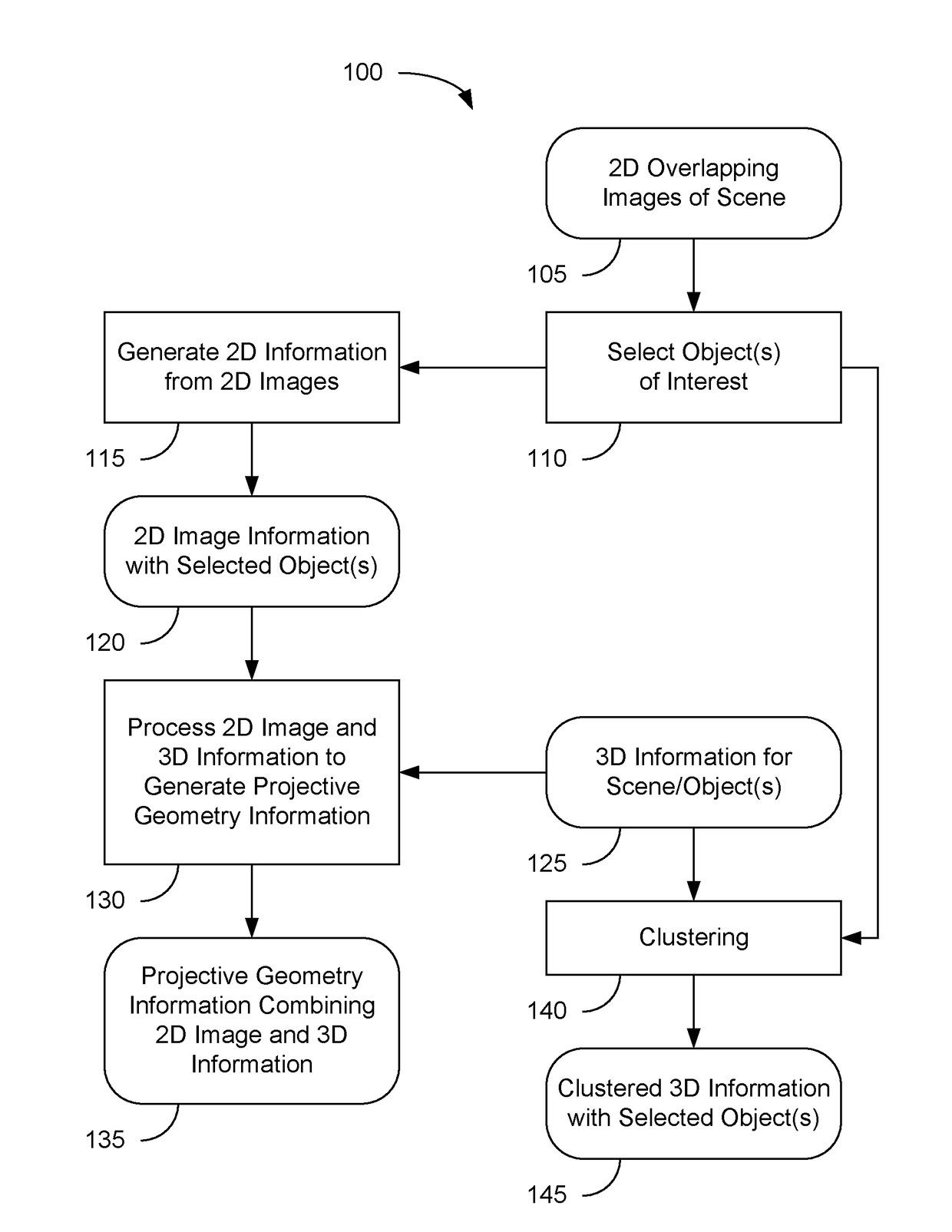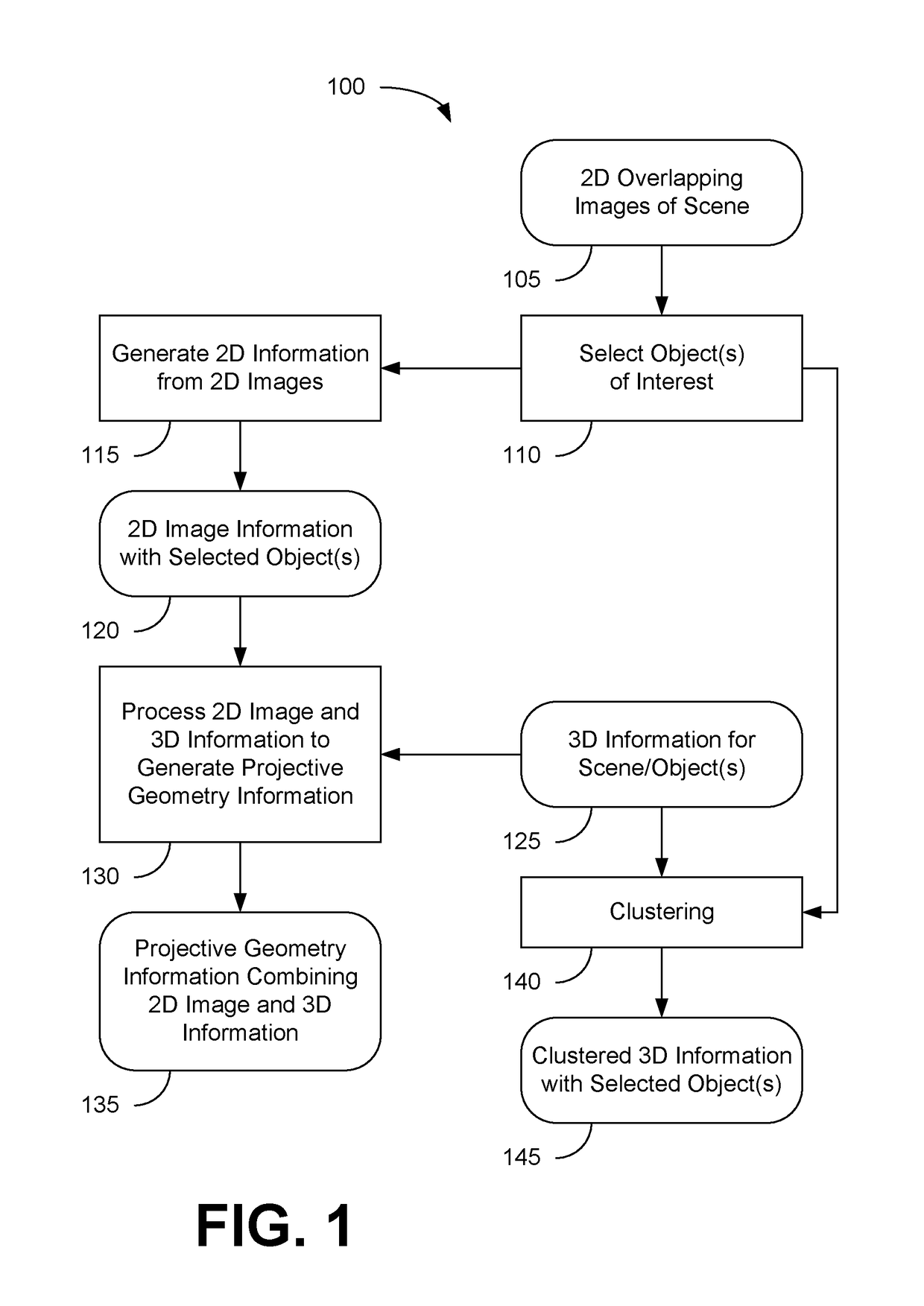Systems and methods for extracting information about objects from scene information
- Summary
- Abstract
- Description
- Claims
- Application Information
AI Technical Summary
Benefits of technology
Problems solved by technology
Method used
Image
Examples
Embodiment Construction
[0019]Many aspects of the disclosure can be better understood with reference to the Figures presented herewith. The Figures are intended to illustrate the various features of the present disclosure. Moreover, like references in the drawings designate corresponding parts among the several views. While several implementations may be described in connection with the included drawings, there is no intent to limit the disclosure to the implementations disclosed herein. To the contrary, the intent is to cover all alternatives, modifications, and equivalents.
[0020]The term “substantially” is meant to permit deviations from the descriptive term that do not negatively impact the intended purpose. All descriptive terms used herein are implicitly understood to be modified by the word “substantially,” even if the descriptive term is not explicitly modified by the word “substantially.
[0021]The term “about” is meant to account for variations due to experimental error. All measurements or numbers ...
PUM
 Login to View More
Login to View More Abstract
Description
Claims
Application Information
 Login to View More
Login to View More - R&D
- Intellectual Property
- Life Sciences
- Materials
- Tech Scout
- Unparalleled Data Quality
- Higher Quality Content
- 60% Fewer Hallucinations
Browse by: Latest US Patents, China's latest patents, Technical Efficacy Thesaurus, Application Domain, Technology Topic, Popular Technical Reports.
© 2025 PatSnap. All rights reserved.Legal|Privacy policy|Modern Slavery Act Transparency Statement|Sitemap|About US| Contact US: help@patsnap.com



